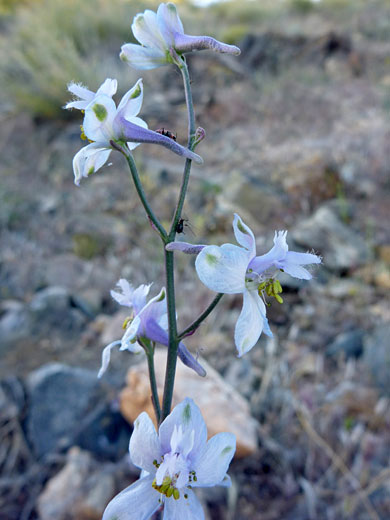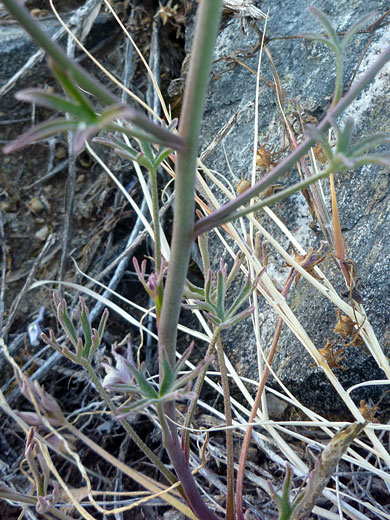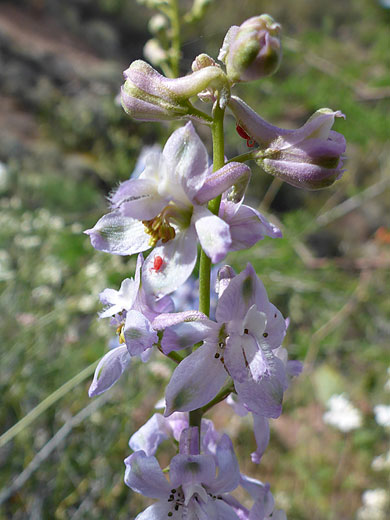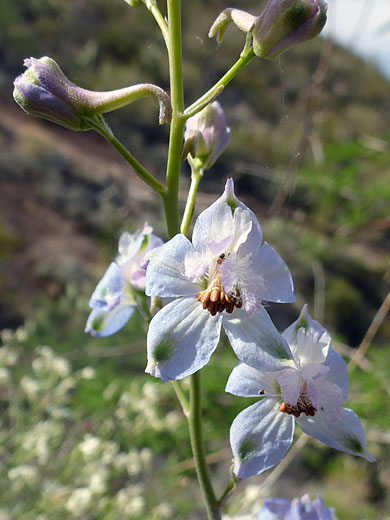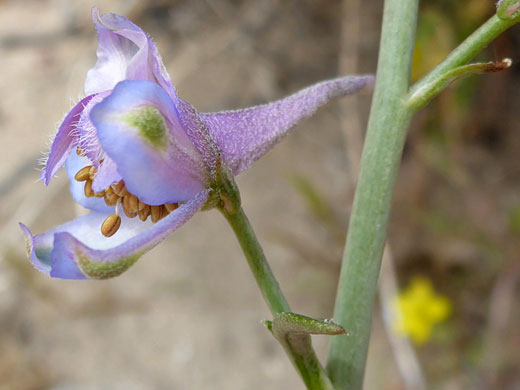Common name:
Parish's larkspur
Family:
Scientific name:
Delphinium parishii
Main flower color:
Range:
South California, southwest Utah, south Nevada and most of Arizona
Height:
Up to 36 inches
Habitat:
Washes, plains, juniper woodland; up to 7,500 feet
Leaves:
Stalked, twice divided into 3 to 20 short, narrow lobes
Season:
February to May
The flower color of delphinium parishii ranges from dark purple/blue in the western part of its range, pink in some parts of California, and light blue or almost white further north and east. Flowers are produced at alternate intervals, on short stalks, along the upper two thirds of the stem, with leaves concentrated around the base. Leaves have longer stalks, and are twice divided into narrow lobes. Leaf tips, leaf stalks and the main stem often have a reddish tint.
Flowers are formed of five sepals, the upper extending backwards into a spur, and four smaller petals, noticeably hairy. The uppermost 2 petals are usually all-white, while the lower 2 are colored. The tips of these lower petals have a small notch. The number of flowers ranges from 6 to 75. Stems and leaves can be hairless or finely short-hairy.
This is the most common larkspur in desert regions. There are three subspecies. Ssp parishii, the most widespread, has light blue sepals, and the sepals at the side curve backwards. Ssp subglobosum has dark blue sepals and blooms early in the season, while ssp pallidum has white, pink or light purple sepals, and blooms late in the season.
Flowers are formed of five sepals, the upper extending backwards into a spur, and four smaller petals, noticeably hairy. The uppermost 2 petals are usually all-white, while the lower 2 are colored. The tips of these lower petals have a small notch. The number of flowers ranges from 6 to 75. Stems and leaves can be hairless or finely short-hairy.
This is the most common larkspur in desert regions. There are three subspecies. Ssp parishii, the most widespread, has light blue sepals, and the sepals at the side curve backwards. Ssp subglobosum has dark blue sepals and blooms early in the season, while ssp pallidum has white, pink or light purple sepals, and blooms late in the season.
All Contents © Copyright The American Southwest | Comments and Questions | Contribute | Site Map


